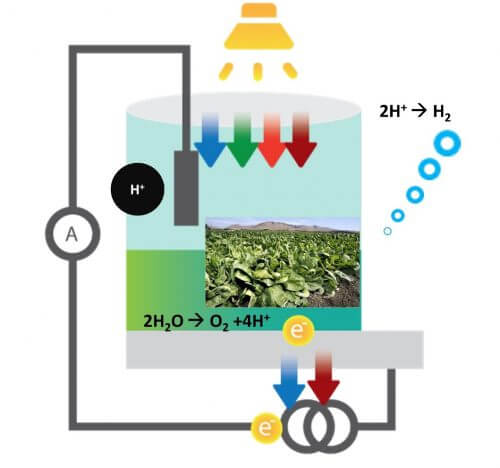The raw material of the device is water and its products are electric current, hydrogen and oxygen. The cell developed by the researchers is based on the photosynthesis system in plants, which was developed and perfected over millions of years by the mechanisms of evolution and led to the formation of life on Earth.

Researchers at the Technion have developed an innovative cell that produces electricity and hydrogen from water using sunlight - reports the journal Nature Communications. It is a bio-photoelectrochemical device based on membranes from spinach leaves. The raw material of the device is water and its products are electric current, hydrogen and oxygen. The cell developed by the researchers is based on the photosynthesis system in plants, which was developed and perfected over millions of years by the mechanisms of evolution and led to the formation of life on Earth. This system breaks down water molecules into oxygen and protons which are used to create ATP molecules, which are actually the basic energy carriers in the animal and plant world (the "fuel" of the cell).
The process of photosynthesis occurs naturally in plant membranes. To harness it in favor of producing an electric current, the researchers added iron ions to the solution. The iron ions mediate the passage of electrons from the membranes to the electrical circuit and enable the creation of an electric current in the cell.
Alternatively, the electric current can be channeled to create hydrogen gas by adding electric voltage from a rear photovoltaic cell. In this way, the energy of solar radiation can be converted into chemical energy stored in the hydrogen gas created in the cell. This energy can be converted when needed into heat and electricity by burning hydrogen, similar to burning hydrocarbon fuel; However, unlike the burning of hydrocarbon fuel, which emits greenhouse gases (carbon dioxide) into the atmosphere and pollutes the environment, the product of burning hydrogen is clean water, so in summary it is a closed cycle that starts with water and ends with water, and allows for the conversion and storage of solar energy in hydrogen gas that can be A clean and sustainable substitute for hydrocarbon fuel.
The unique combination between a man-made photovoltaic cell and plant membranes, which absorb sunlight and convert it with high efficiency into a flow of electrons, paves the way for the development of new technologies to create clean and green synthetic fuel from renewable sources: water and solar energy.
The research was conducted by the doctoral students Roi Panhassi, Dan Kalman and Gadiel Safar under the guidance of Prof. Noam Adir from the Shulich Faculty of Chemistry, Prof. Gadi Schuster from the Faculty of Biology and Prof. Avner Rothschild from the Faculty of Materials Science and Engineering. According to Prof. Rothschild, "the uniqueness of the research is that it combines leading experts from three different faculties at the Technion, i.e. from three fields of knowledge: biology, chemistry and materials engineering. The combination between the natural (leaves) and the artificial (photovoltaic cell and electronic components), and the need to make these components communicate with each other, are complex engineering challenges that required the combination of forces between us."
The research was conducted in the Nancy and Steven Grand Interunit Energy Program and was carried out in the Technion Hydrogen Laboratory established under the auspices of the Adelis Foundation and the Energy Program. It was funded by the Centers of Excellence program of the Planning and Budgeting Committee and the National Science Foundation, a special grant from the Israel-USA Binational Science Foundation (BSF), and the German-Israeli Cooperation in Projects (DIP).

3 תגובות
Well done. Popeye is proud of you. It has finally been proven that spinach has energy. So why aren't the benefits published? Because it is very low, expensive and not commercial (even in the future).
The State of Israel should put all its resources into this kind of research - more effective than a missile against a missile against a missile against...
The world needs to wean itself off oil, coal and other mineral energies...
Very nice. This can really be called "green fuel" (in the context of the color...)
Just one problem: I'm not sure people will want to fill their gas tank with hydrogen. It's a little too explosive.